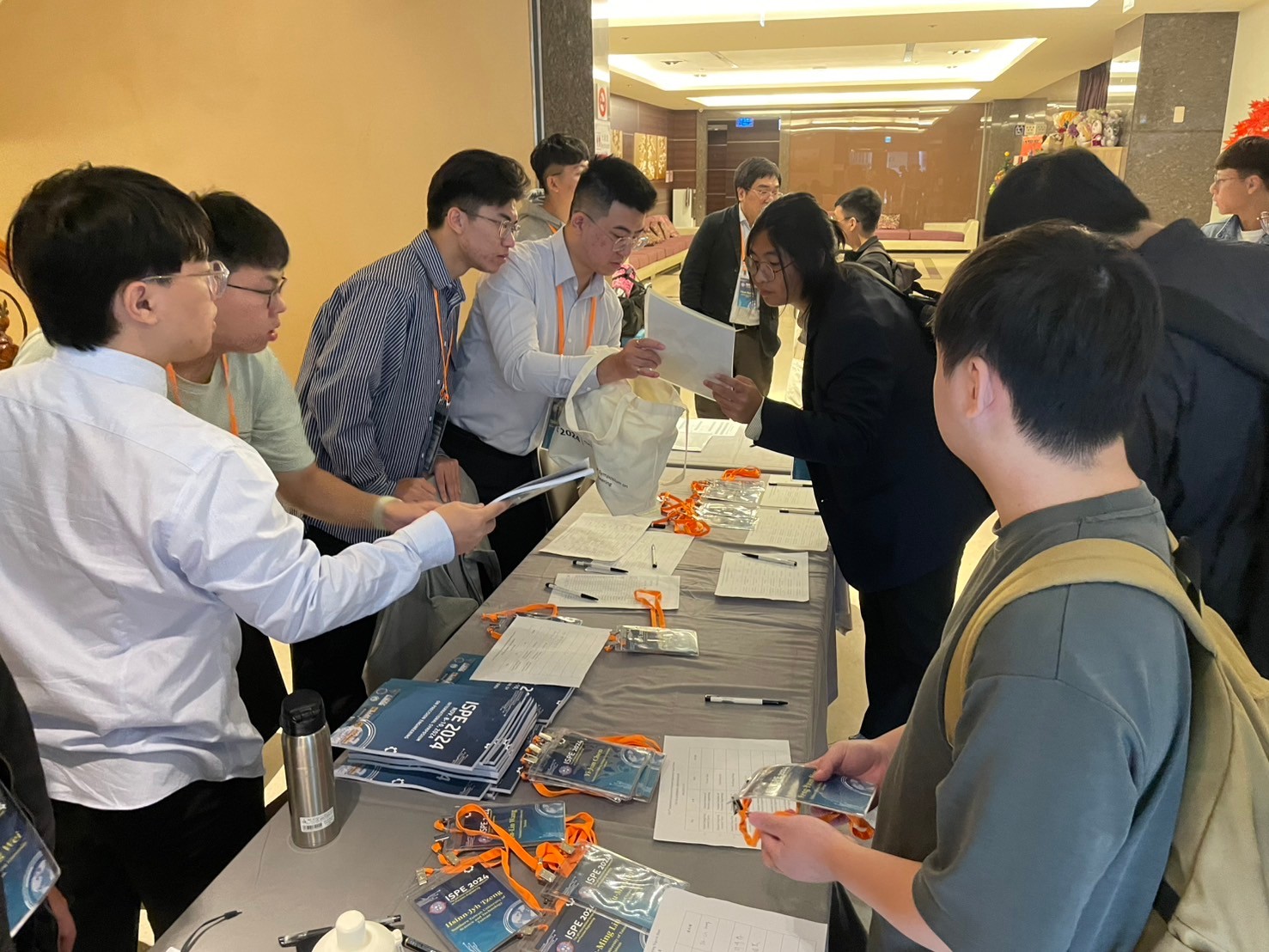
Rigester place
..................................................................................................................................................................................................................................................................................................................................................................................................................................................................................................................................................................................................................................................................................................................................................................................................................................................................................................................................................................................................................................................................................
LOCAL NEWS FOR ISPE 2024
NCHU NEWS:
https://www2.nchu.edu.tw/news-detail/id/58569
(PDF Download)
PChome NEWS:
https://news.pchome.com.tw/living/cna/20241112/index-17313750933647518009.html
(PDF Download)
CNA NEWS:
https://www.cna.com.tw/postwrite/chi/386907
(PDF Download)
Previous ISPE 2024 Preceedings
Special Issue "Selected
Papers from ISPE 2024"

Rigester place
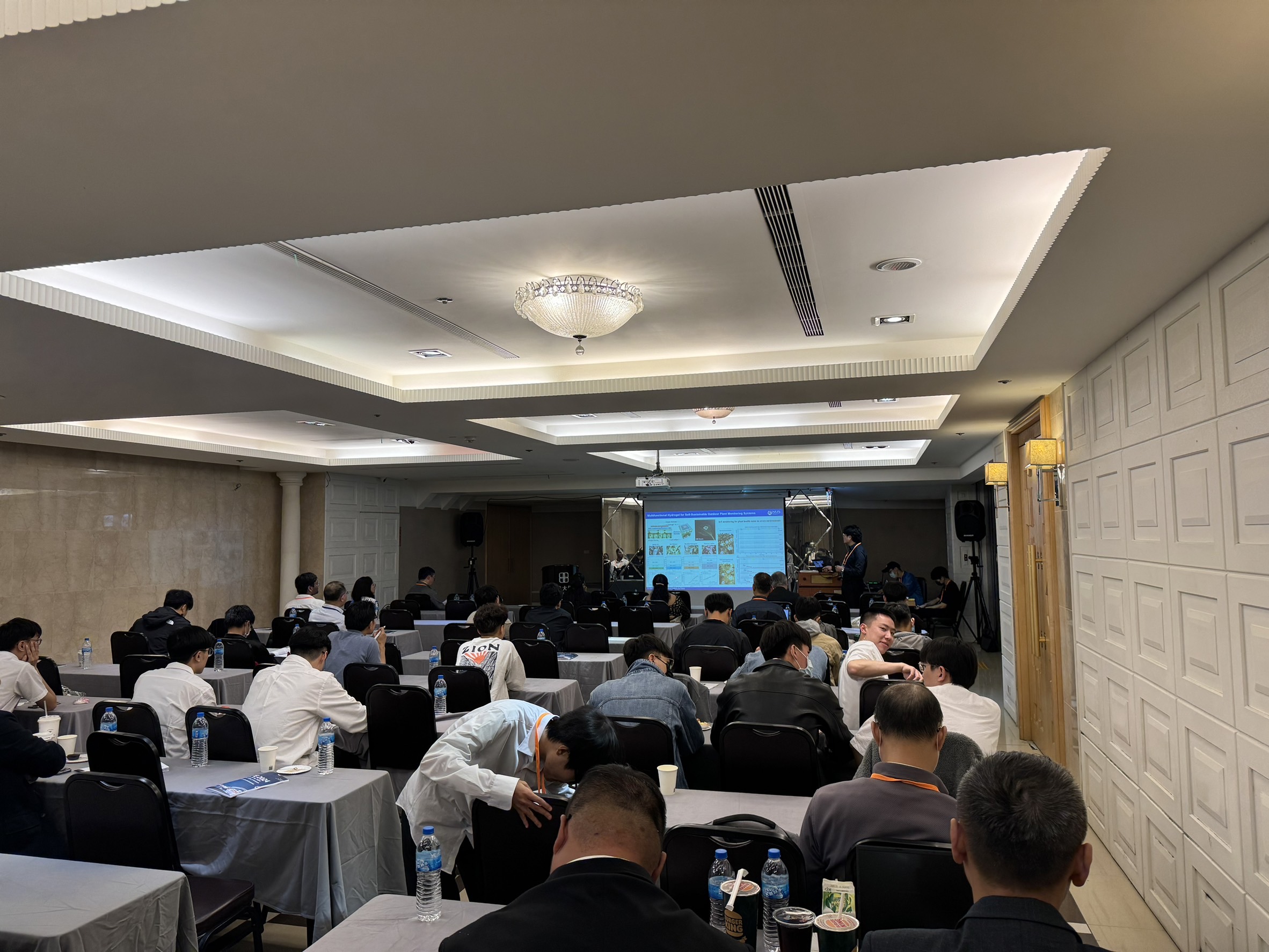
Symposium room

Group photo of attendance

Group photo of the scholars

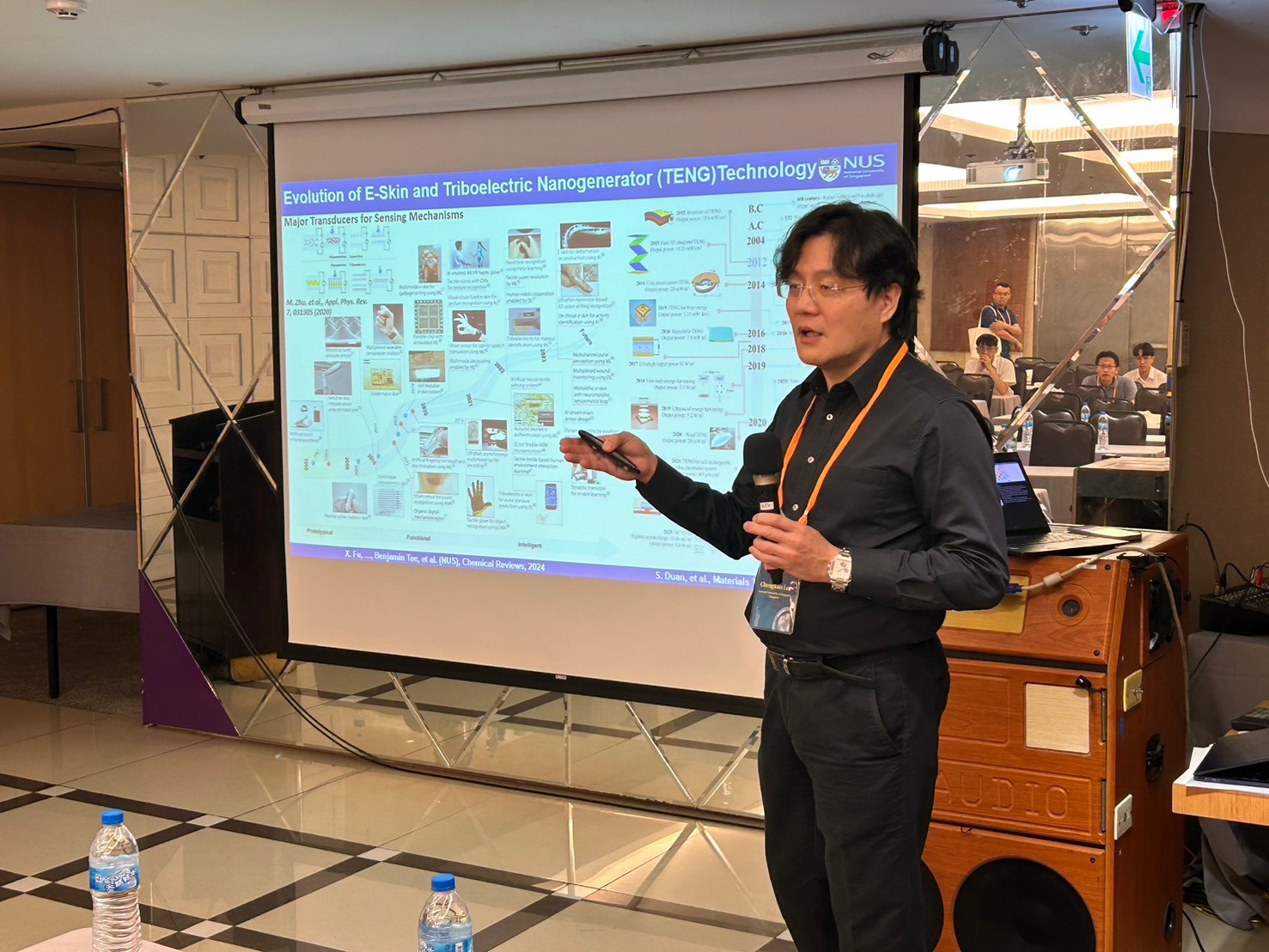

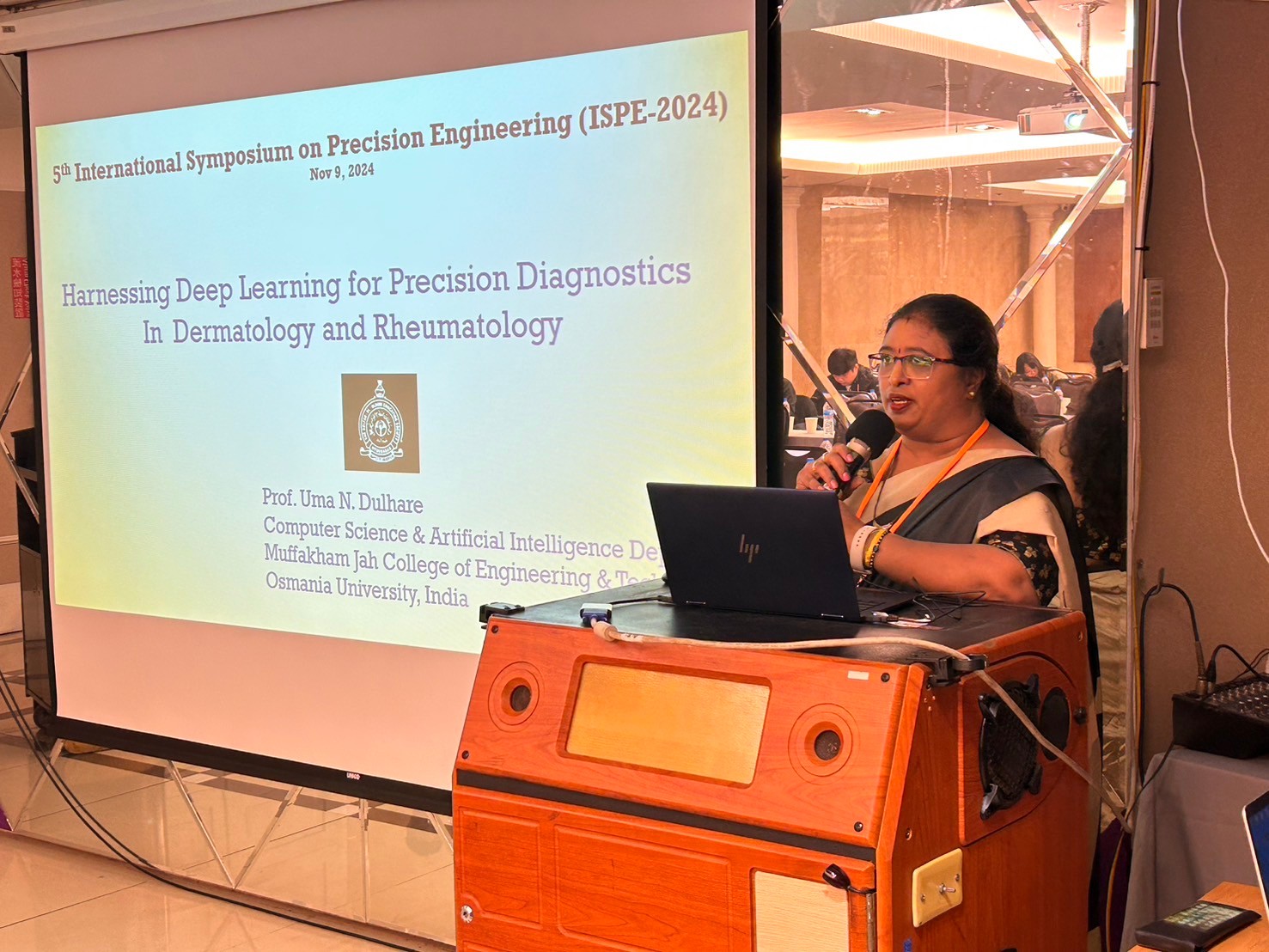
Harnessing Deep Learning for Precision Diagnostics in
Dermatology and Rheumatology
Presented by Prof.
Uma N. Dulhare
Muffakham Jah College of Engineering &
Technology, India
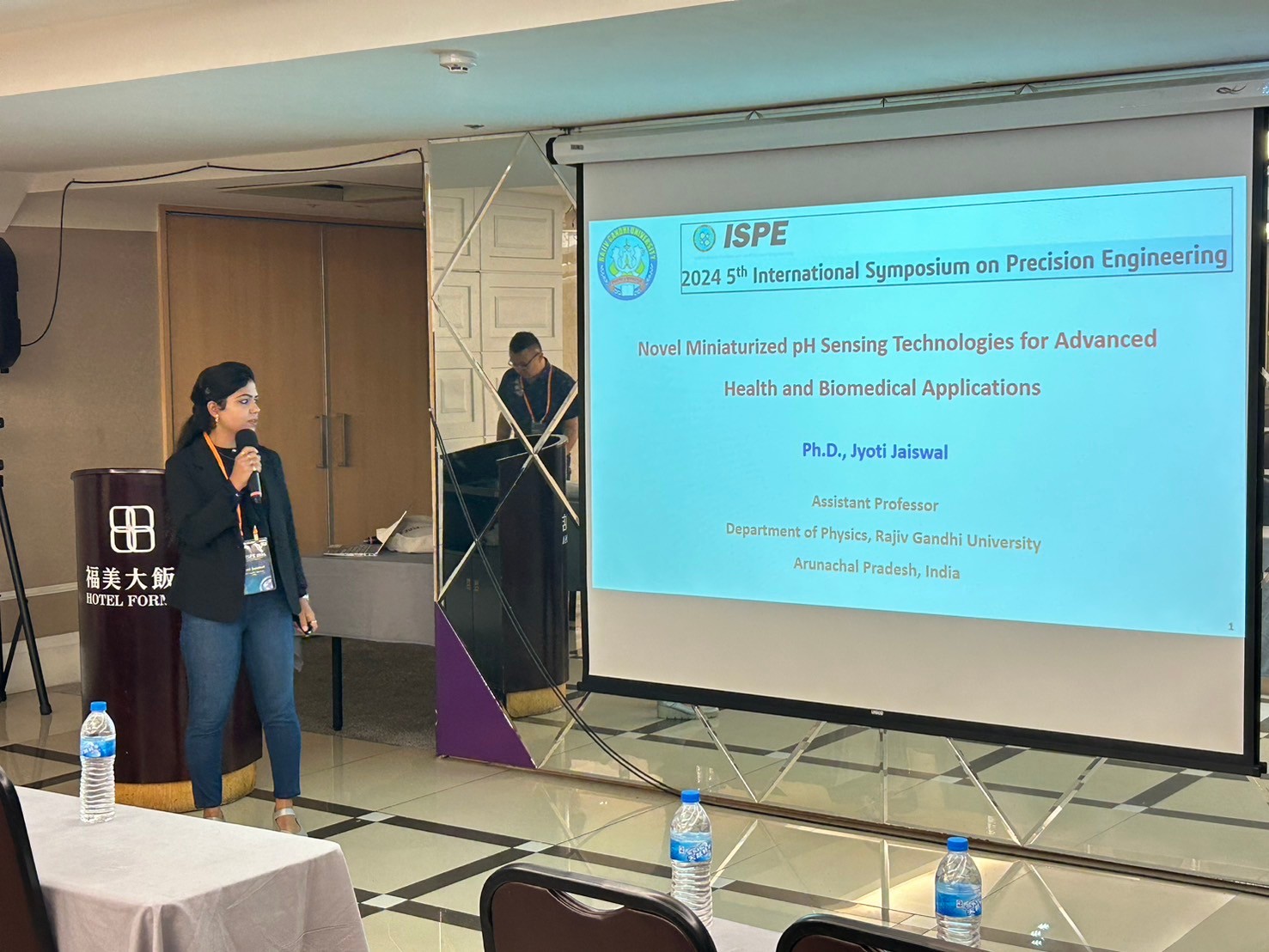
Novel miniaturized pH sensing technologies for advanced
health and biomedical applications
Presented by Assoc. Prof. Jyoti
Jaiswal
Rajiv Gandhi University, India

Collaborative 3D Welding Robots with Augmented Vision
Utilizing the Digital Twin Concept
Presented by Assoc. Prof. Ratchatin
Chancharoen
Chulalongkorn University, Thailand
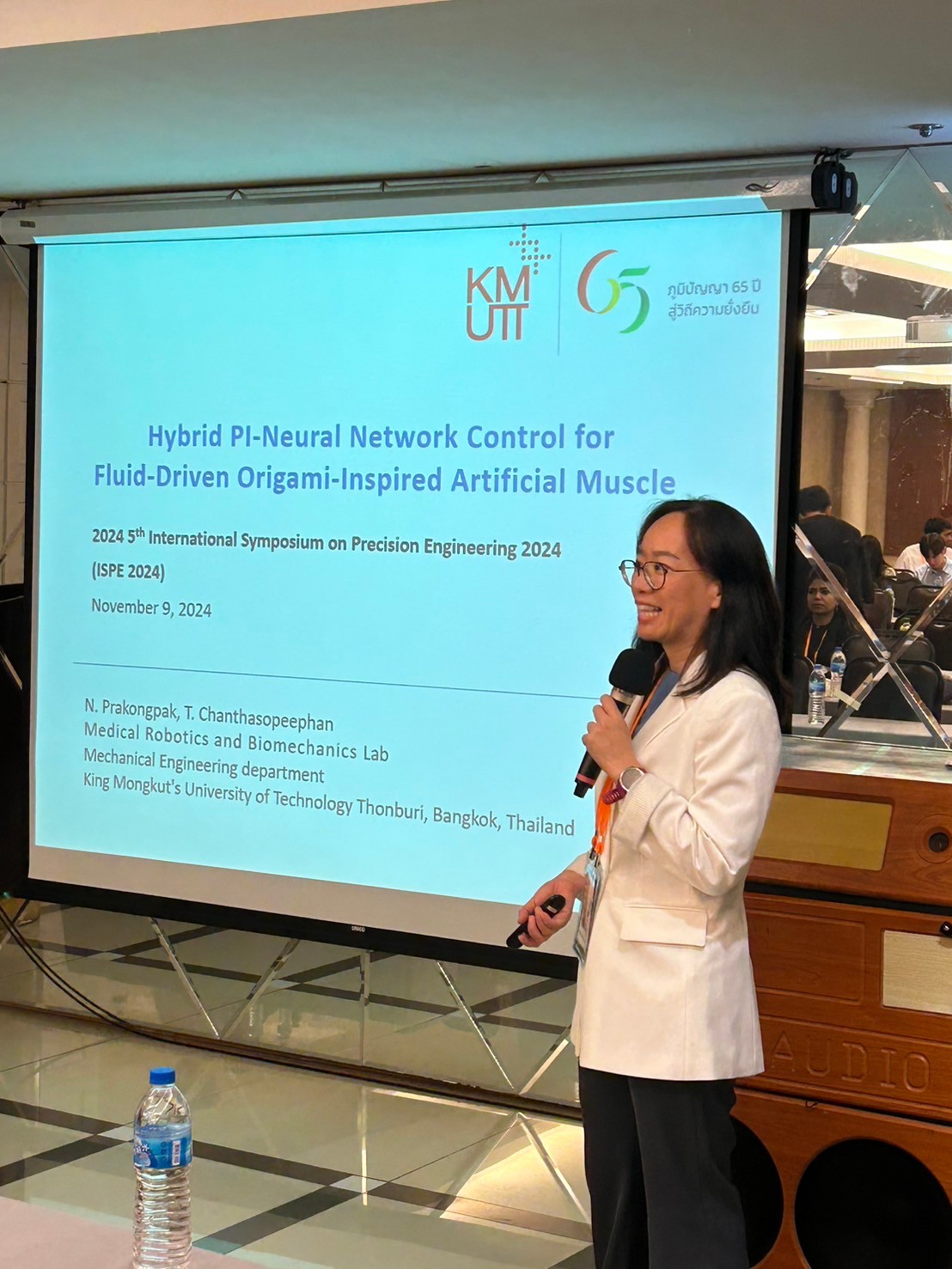
Hybrid PI-Neural Network Control of a Fluid-Driven
Origami-Inspired Pneumatic Artificial Muscle
Presented by Assoc. Prof. Teeranoot
Chanthasopeephan
King Mongkut's University of Technology Thonburi, Thailand

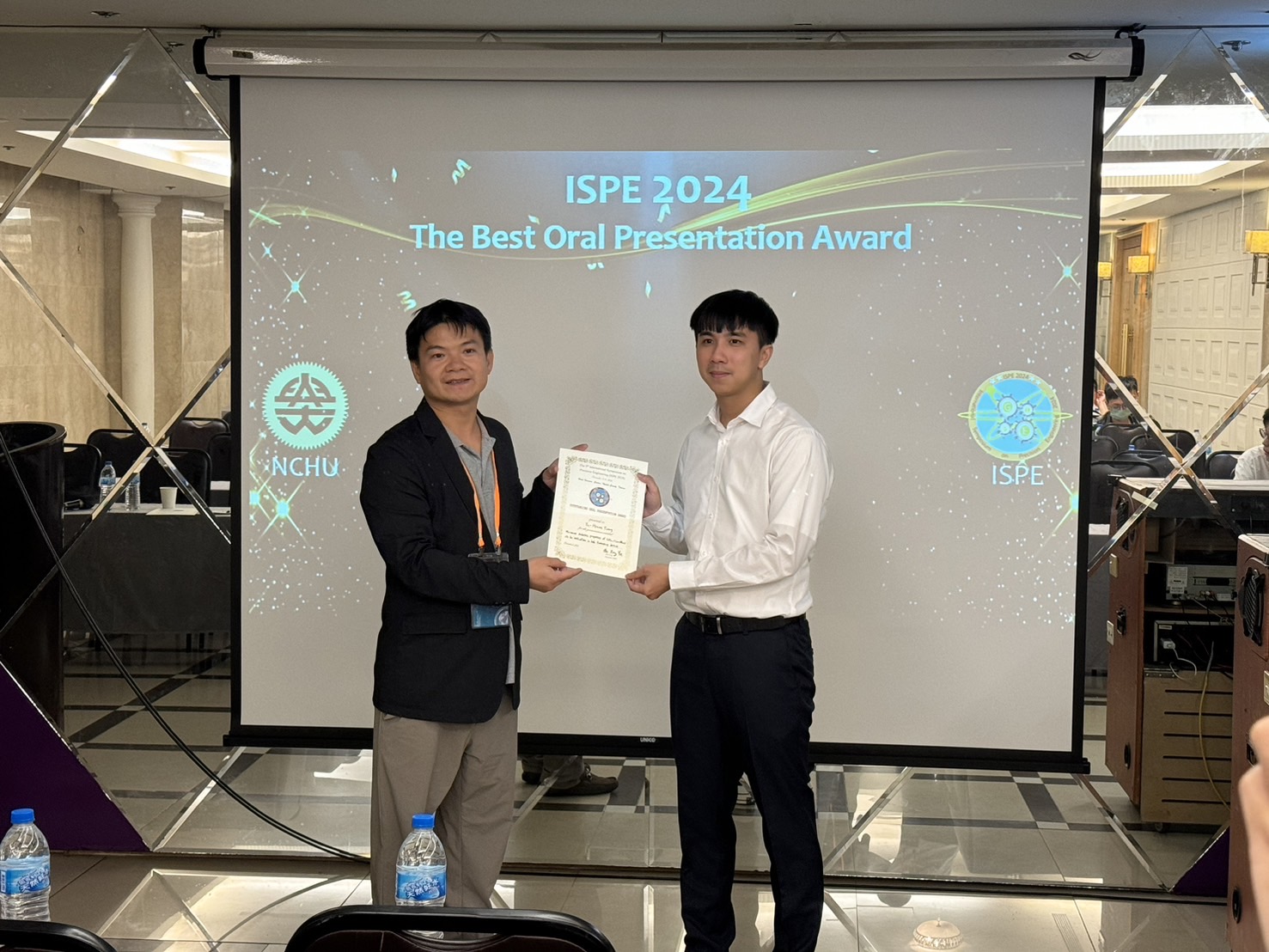
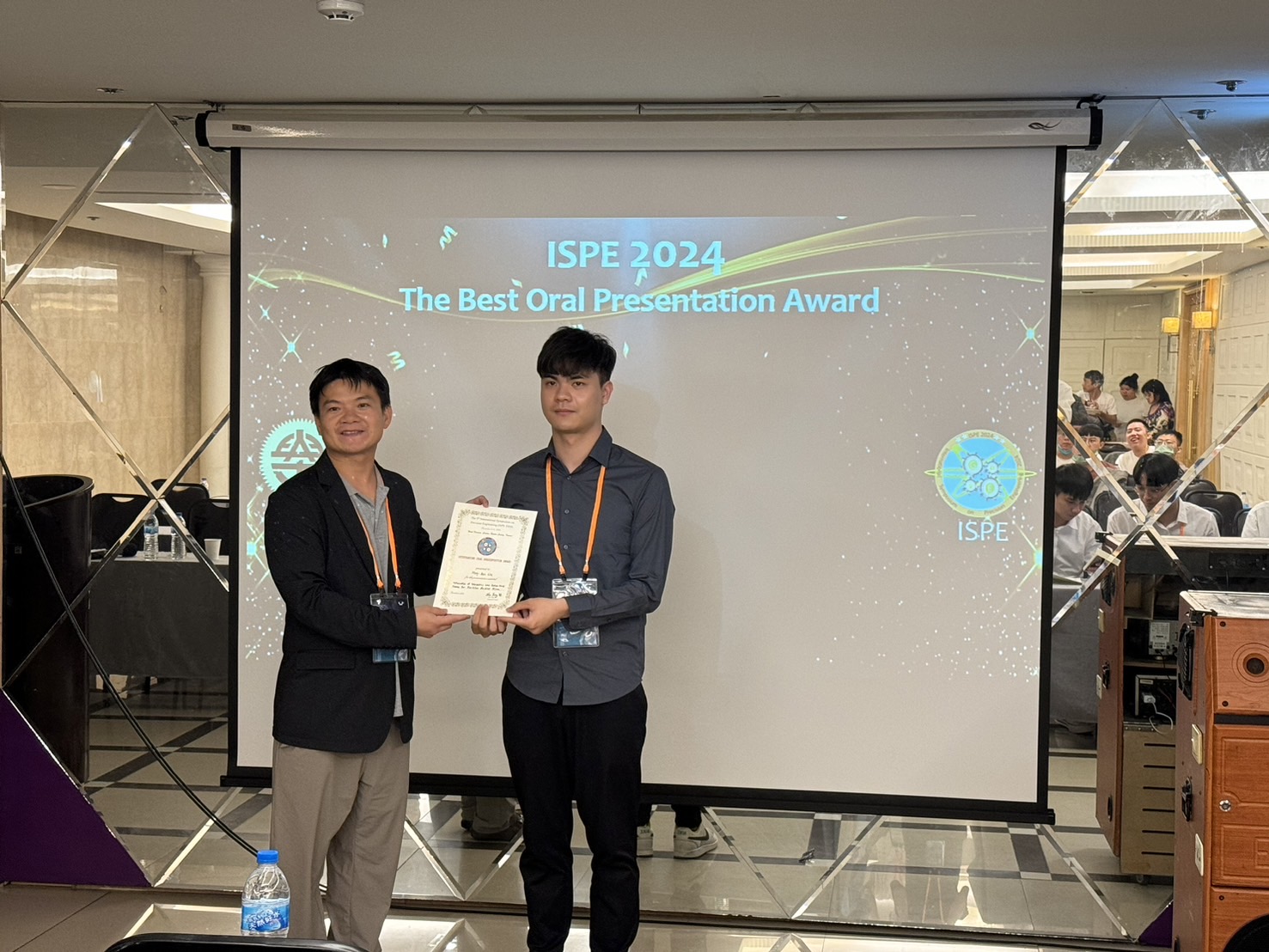
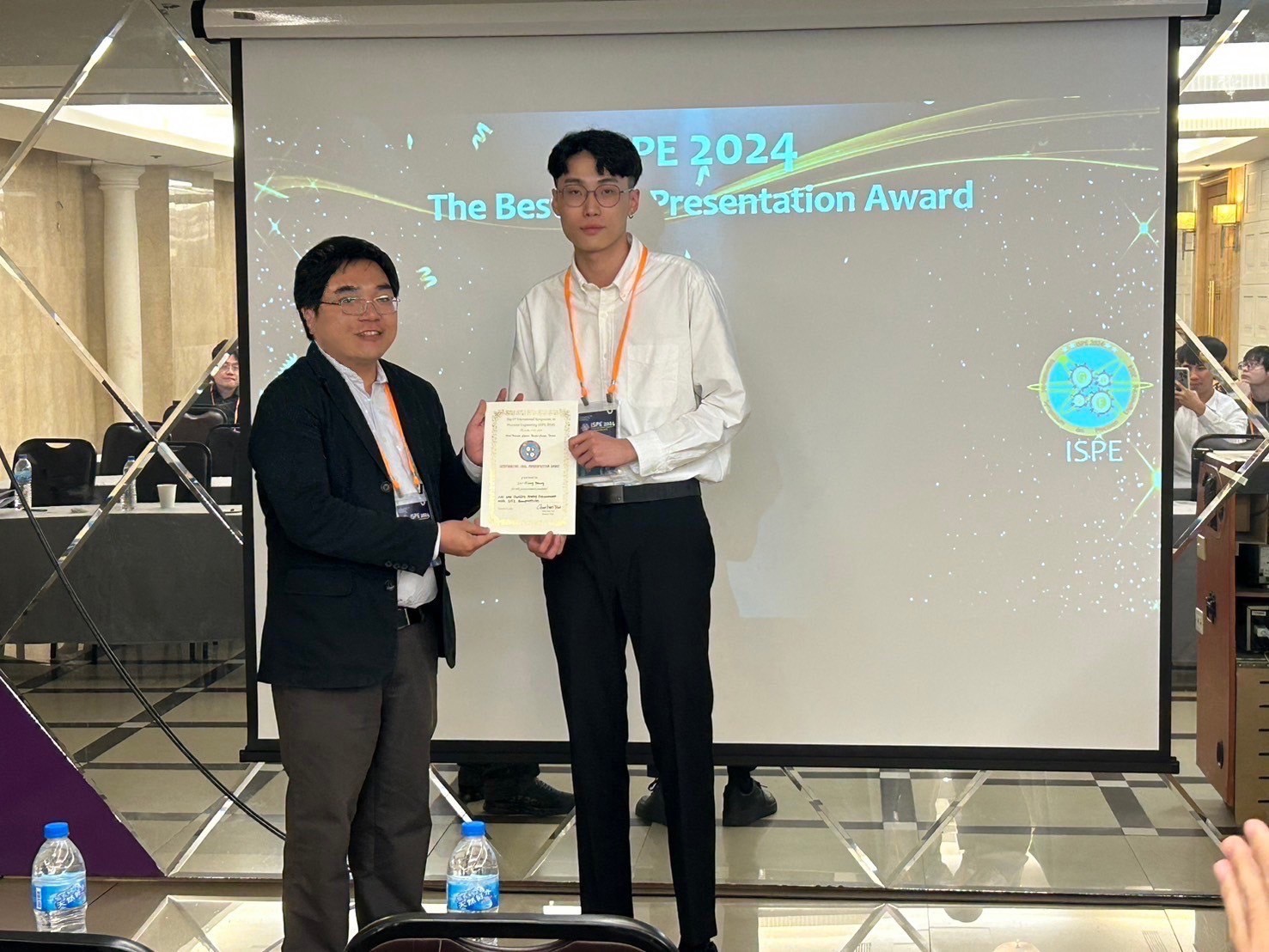
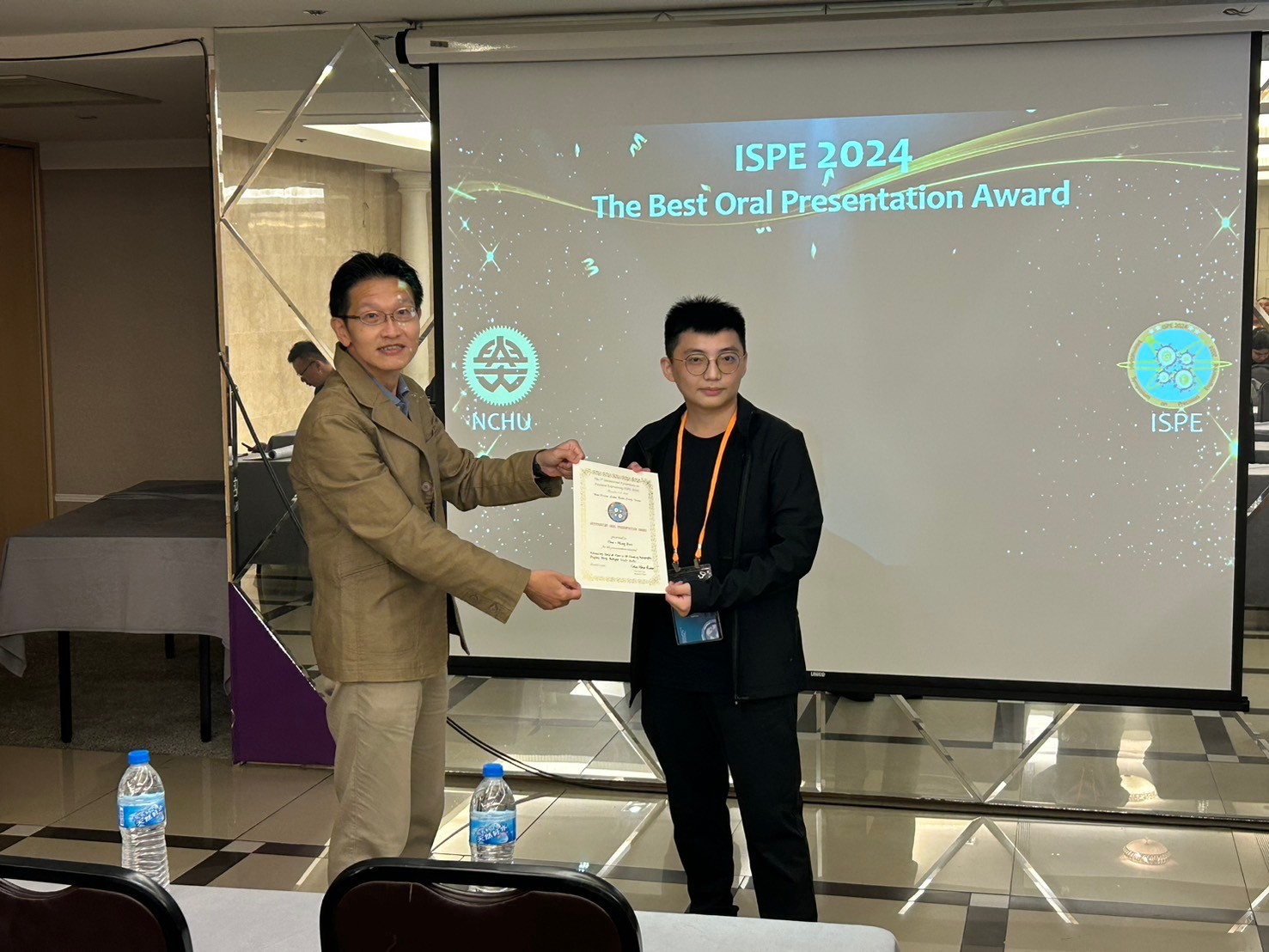
Hao-Ming Kuo,
Jyun-Yan Luo, Cang-Ci Guo, and Chun-Wei Tsai*,
“Enhancing Field of View in 3D Floating Holographic
Display Using Multiple LCoS-SLMs”,
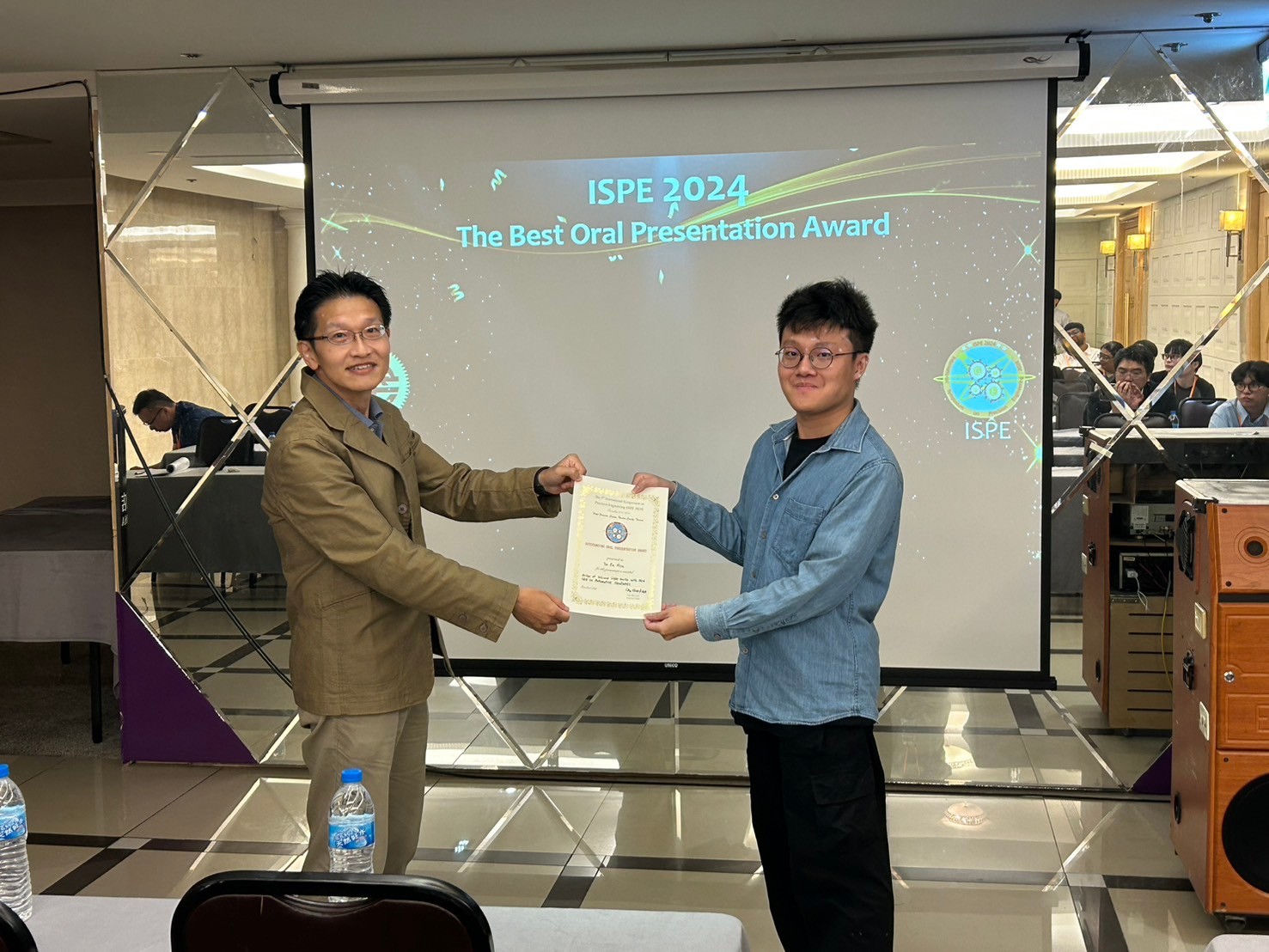
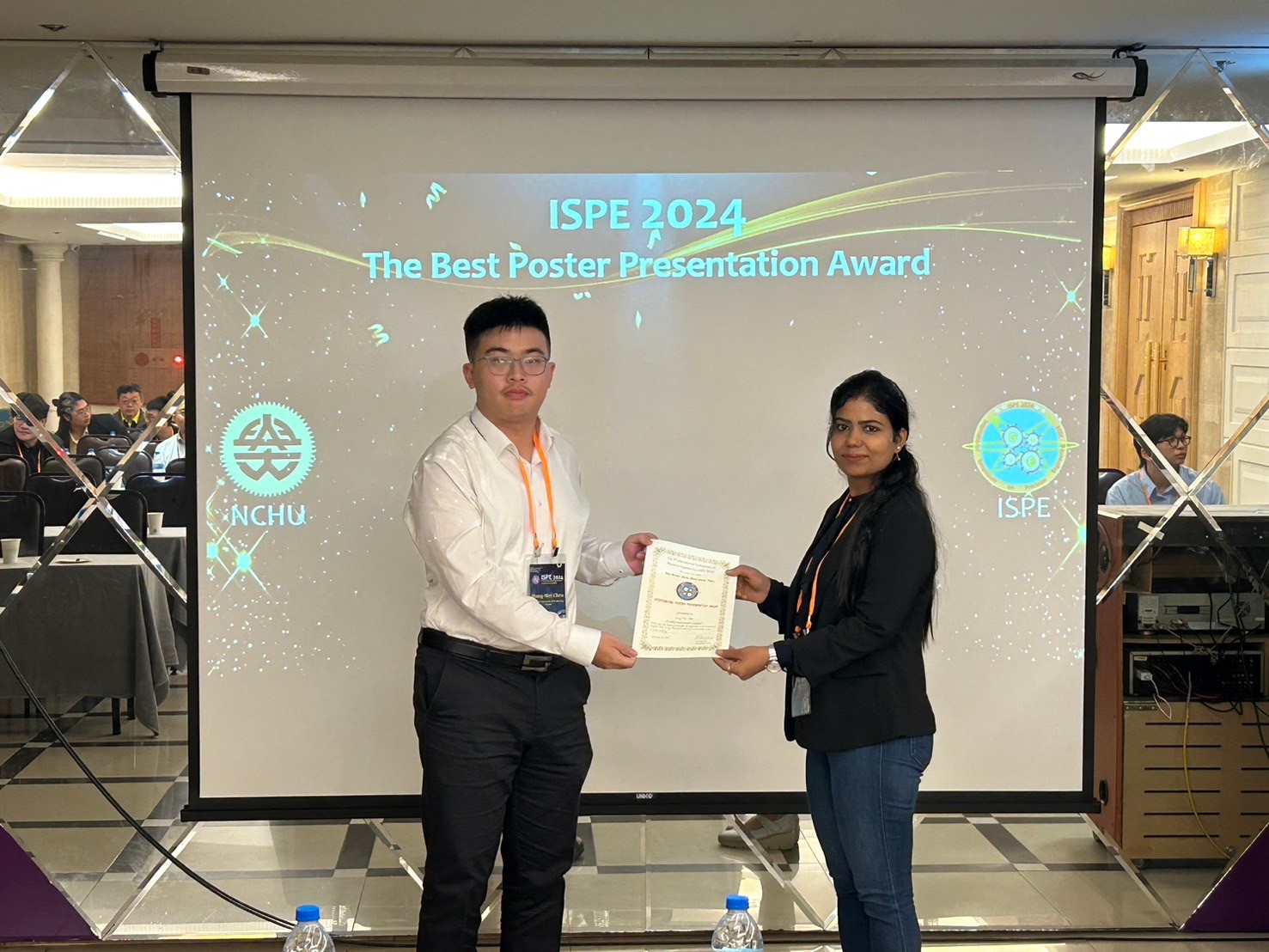
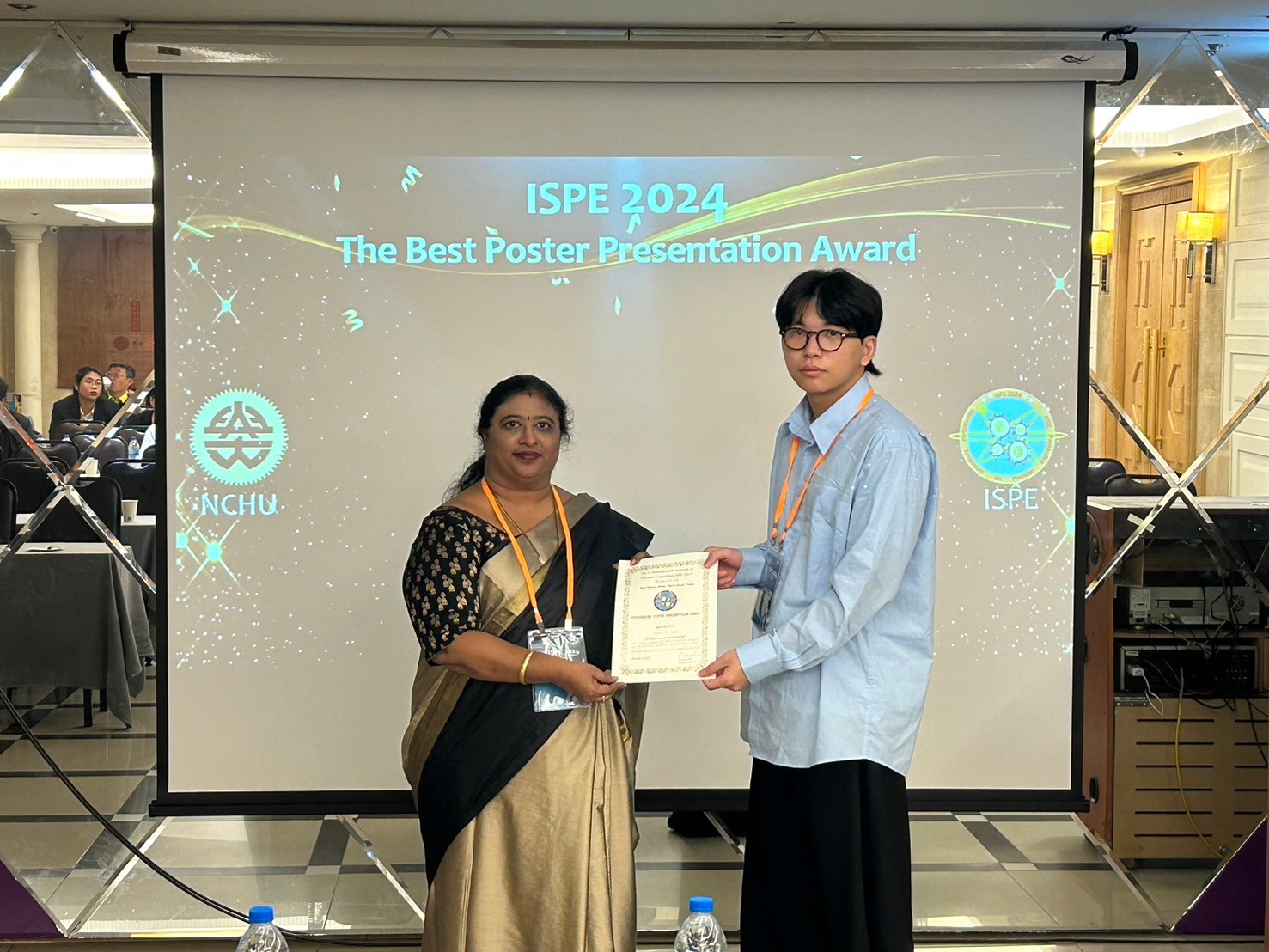

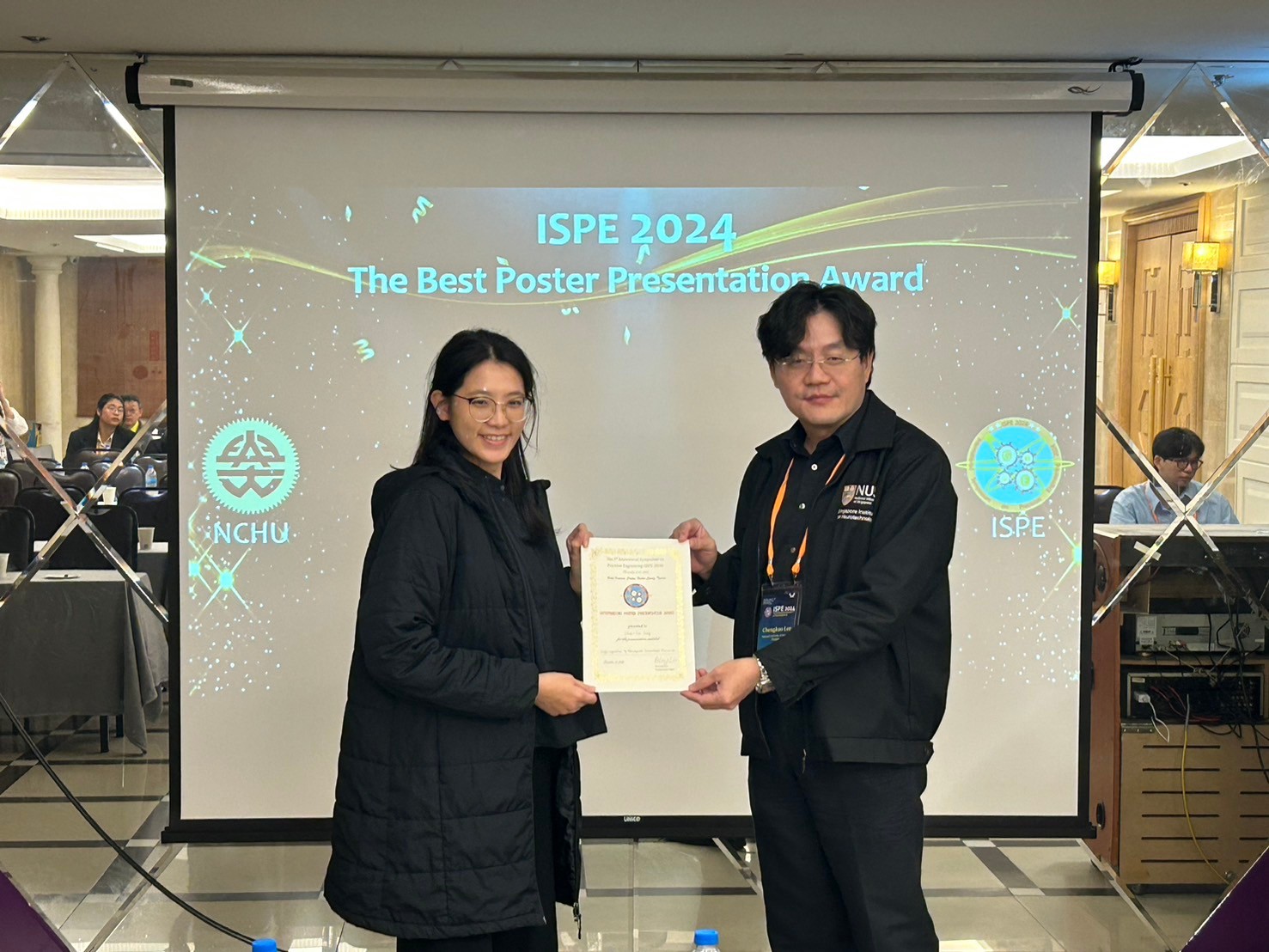
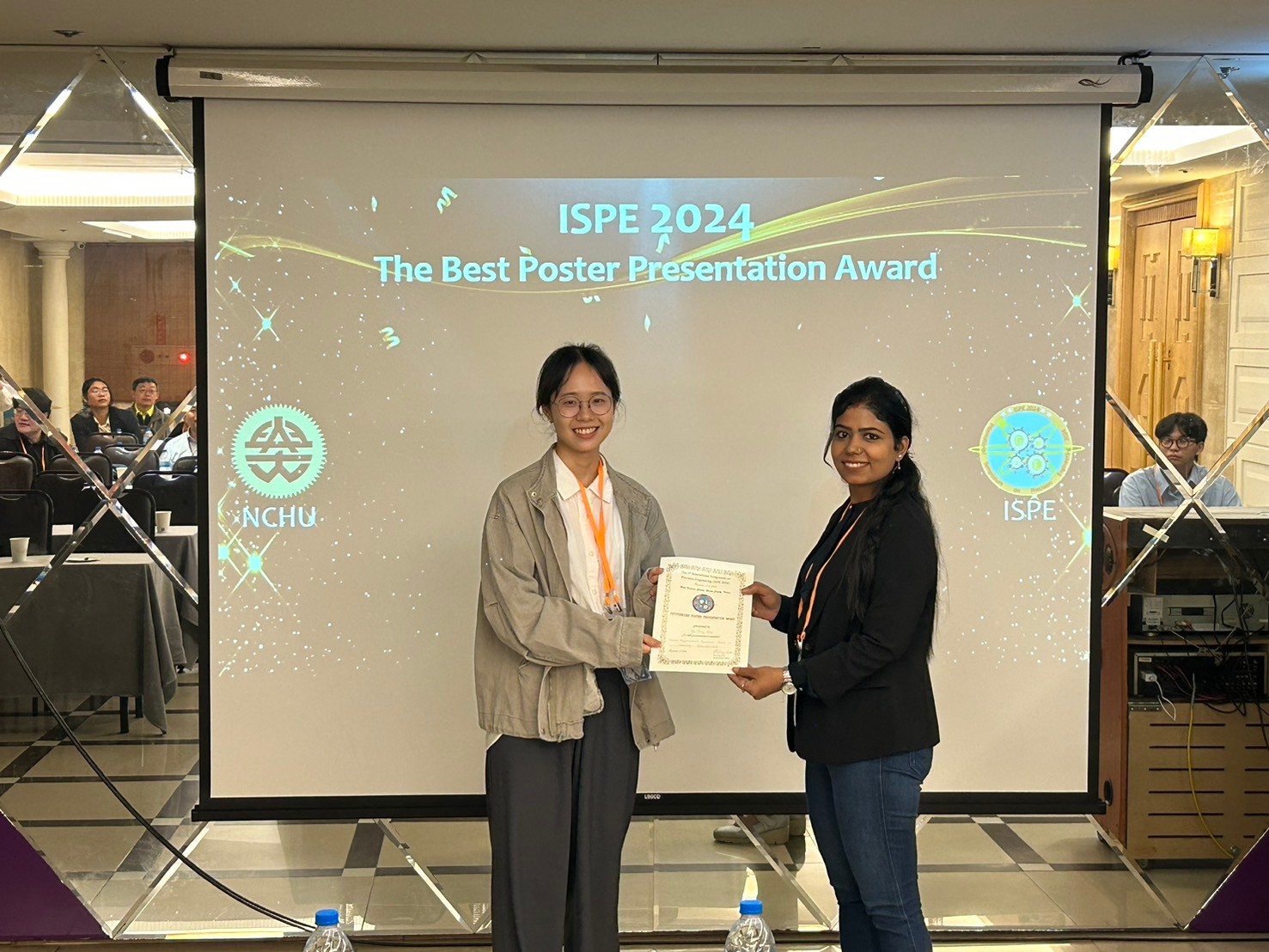

Location
The Hotel Formosa
Address: No. 78, Bishan Road, Caotun Town, Nantou
County, Taiwan
How to get to the Venue
Option 1:
By using our free shuttle bus
service. Pick-up location is at Taichung High Speed Rail Statio or National Chung
Hsing University.
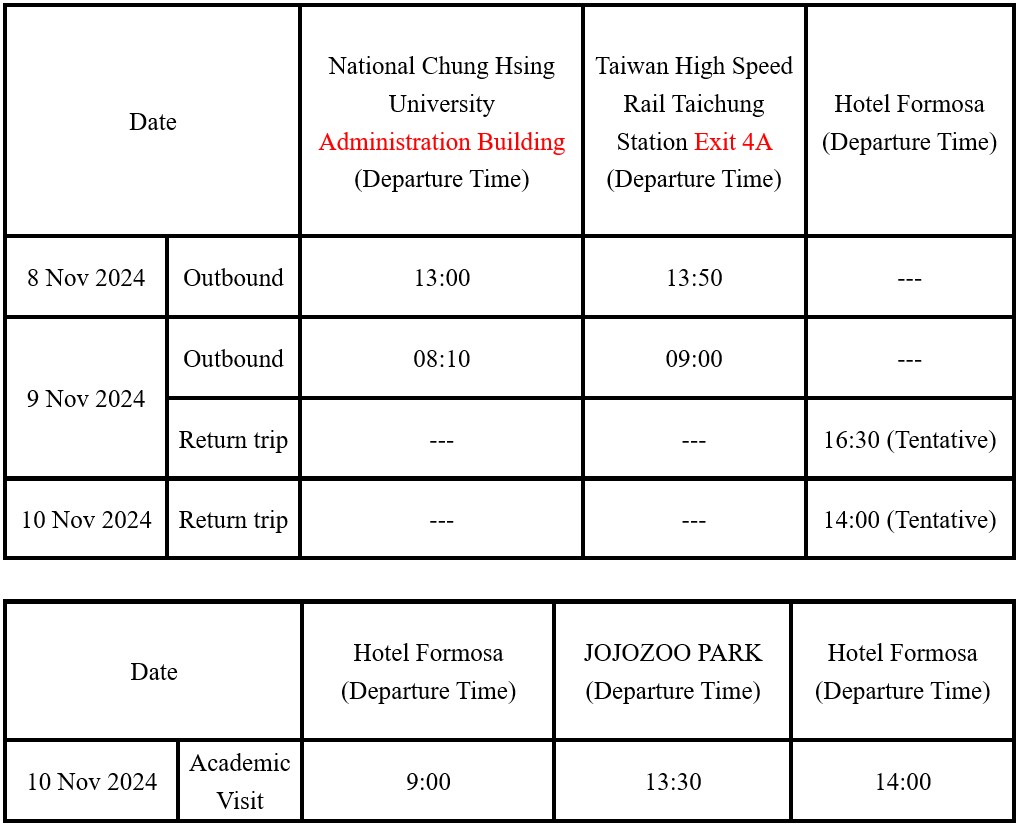
Option 2:
By
Private Vehicle.
Taoyuan International
Airport, Taiwan → Take Hangzhan South Road and Hangzhan North Road to National
Highway ![]() →Take National
Highway
→Take National
Highway ![]() and Provincial
Highway 74 to Section 3 of Fencao Road in Caotun Town→Follow Provincial Highway
14 and Neishan Highway/Section 1 of Chenggong Road/Provincial Highway 3 to
Bishan Road in Caotun
and Provincial
Highway 74 to Section 3 of Fencao Road in Caotun Town→Follow Provincial Highway
14 and Neishan Highway/Section 1 of Chenggong Road/Provincial Highway 3 to
Bishan Road in Caotun
Option 3:
By public transportation.
Take the Taiwan High Speed Rail, the local train, or bus to Tainan Station.
Continue by
Xingnan Bus Green Line 13 to Koupi Elementary
School Station
Registration Fee
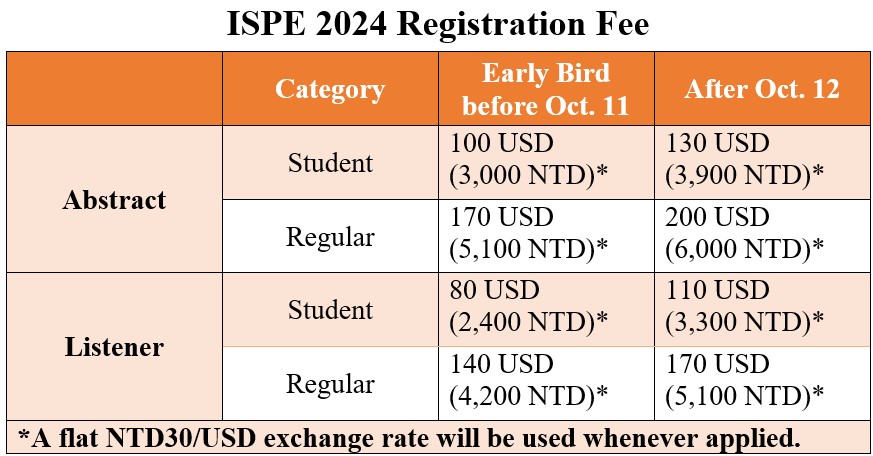
Dinner, transportation and Academic Visit of JOJOZOO PARK fees are included in
the Symposium Registration Fee. You are welcome to bring any accompanying
persons (additional charges apply), please reserve your seat here before
November 1st. Please note that on-site registration is not allowed.
匯款資訊:
匯入銀行:永豐銀行興大分行
銀行代號:807
戶名:社團法人中華民國國立中興大學精密工程研究所所友會
匯款帳號:044-018-0009162-2
請透過電子郵件提供研討會註冊費的匯款帳號末五碼。
Remittance Information:
Account: NCHUGIPE Alumni Association
Account Number: 044-008-0000610-8
SWIFT CODE: SINOTWTP
Address: Bank Sinopac, 9F., No. 36, Sec. 3, Nanjing E. Rd., Taipei, 104, Taiwan
Tel/ Fax: +886-2-2517-3336/ +886-2-2517-2824
Please provide the wire transfer information for the symposium registration fee
via email.
Note:
• One
regular registration can publish a paper.
• Student fee is ONLY applicable for the student who is the FIRST author.
• Additional paper registration precondition: The registered author should be
the first authors in both papers.
• All
Symposium attendees must register. Personal badges will be provided to
identify registered participants.
• 15 minutes Oral presentation / Poster Presentation
• Symposium program
• Attendance to all sessions
• Name tag
• Certificate of presentation
• Symposium bag
• Lunches, coffee breaks and Banquet
Listener Registration Fee Includes:
• Symposium program
• Attendance to all sessions
• Name tag
• Certificate of attendance
• Symposium bag
• Lunches and coffee breaks
Refund/Cancellation Policy
If a registrant is unable to participate in the event for any reason, he or she
can replace other co-authors or other people from the same
institution/organization through arrangements with the registrar. A
written request for cancellation must be sent to the symposium secretary via
email nchugipe@gmail.com.
In case of cancellation, partial cancellation or modification, the following
fees will be charged:
• Cancellation up to 90 days prior to event date : Free of charge
• 89-30 days prior to event date : 50% processing fee is required
• 29-0 days prior to event date : No refund
No Show
If the author does not appear, the registration fee will not be refunded.
Speakers
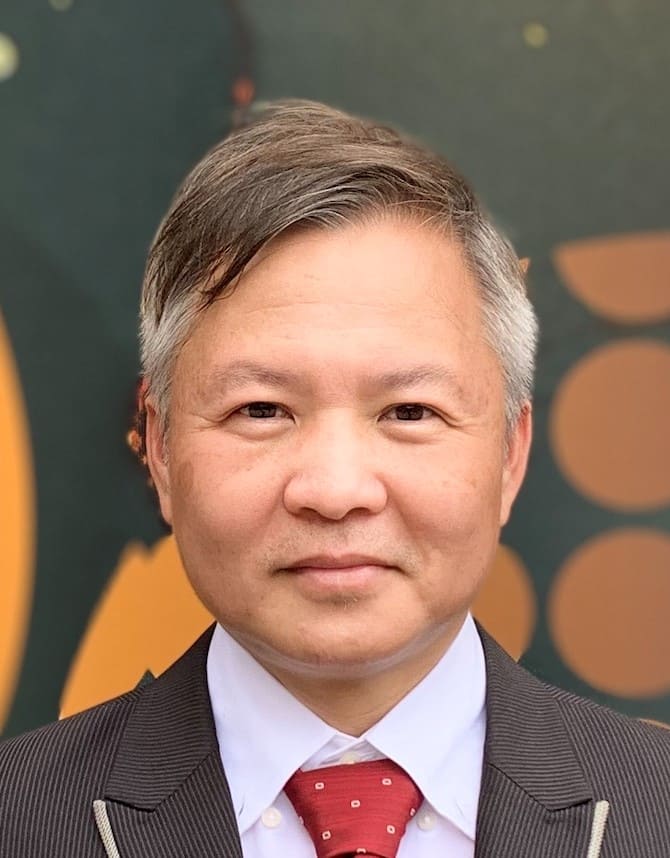
Chair Prof. Ying-Hao Chu
Associate Vice President for Research and Development
Director of NTHU CNMM
Department of Materials Science and Engineering
National Tsing Hua University, Taiwan
Title of Plenary Speech
Epitaxial Growth of Bi2O2X
Films and Related Heterostructures
Abstract of Plenary Speech
The pursuit of high-performance electronic devices has driven the
research focus towards 2D semiconductors with high electron mobility and
suitable bandgap. Previous studies have demonstrated that bismuth oxycompound
(Bi2O2X, X=S, Se, Te, BOX) has remarkable physical
properties, such as native oxide layer and ultrahigh carrier mobility,
facilitating the development of advanced electronic devices in the sub-silicon
era. However, the understanding of the growth of BOX is still unclear, and the
methods to control BOX' s physical properties should be further explored. Thus,
in our lab, the epitaxy of Bi2O2Se (BOSe) and Bi2O2S
(BOS) can be obtained to realize the growth mechanism and secure higher
crystallinity. The intrinsic transportation property and photoelectricity of BOX
will also be investigated. Furthermore, various control methods have been
demonstrated on BOX, including compositional modification, doping process, and
non-volatile modulation. With these efforts, the controlled methods provide
pathways to manipulate the electrical properties of BOX and corresponding
devices, further advancing this material system for development in the
next-generational electronics.

GlobalFoundries Chair Prof. Chengkuo Lee
Center for Intelligent Sensors and MEMS
Department of Electrical and Computer Engineering
National University of Singapore, Singapore
Title of Plenary Speech
Abstract of Plenary Speech
In the rapidly evolving field of
artificial intelligence of things (AIoT), a key challenge is to process sensing
signals efficiently while minimizing latency and power consumption. Traditional
microelectronic systems face limitations in speed and energy efficiency,
prompting the exploration of photonic integrated circuits for their superior
data transmission and computational capabilities. Silicon Photonic integrated
Circuits (Si PIC) offer miniaturized solutions for multimodal spectroscopic
sensory systems by leveraging the simultaneous interaction of light with
temperature, chemicals, and biomolecules. Furthermore, Si and AlN waveguides can
manipulate light-matter interactions at the nanoscale, become an appealing CMOS
Photonics platform for photonics neural networks (PNN) computation application
and diversified biochemical and physical sensing applications with high
sensitivity and small footprints. The multimodal spectroscopic sensory data is
complex and shows huge data volume with high redundancy, thus requiring high
communication bandwidth associated with high communication power consumption to
transfer the sensory data. To circumvent this high communication cost, we bring
the photonic sensor and processor into intimacy and propose a photonic
multimodal in-sensor computing system using an integrated silicon photonic
convolutional processor. On the other hand, surface plasmons have proven their
ability to boost the sensitivity of mid-infrared hyperspectral imaging by
enhancing light-matter interactions. Recently, we have investigated the phonons
in hyperspectral bioimaging by developing a synergistic plasmon-phonon system.
We demonstrated that phonons, in synergy with plasmons, enhance the per-second
spectral de-overlapping functionality in imaging dynamic reaction process
involved with COVID viruses.
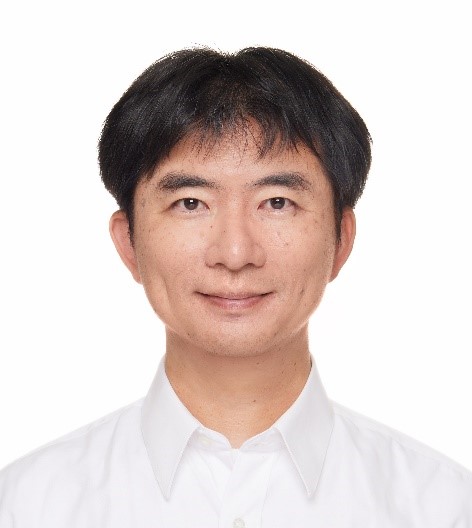
Prof. Dr. Chao-Cheng Kaun
Research Center for Applied Sciences, Academia Sinica, Taiwan
Title of Keynote
Speech
Driving noncollinear interlayer exchange coupling intrinsically in
magnetic trilayers
Abstract of Keynote
Speech
Ferromagnetic side layers sandwiching a nonmagnetic
spacer as a metallic trilayer has become a pivotal platform for achieving
spintronic devices. Recent experiments demonstrate that manipulating the width
or the nature of conducting spacer induces noncollinear magnetic alignment
between the side layers. Our theoretical analysis reveals that altering the
width of spacer significantly affects the interlayer exchange coupling (IEC),
resulting in noncollinear alignment. Through analytic and first-principles
methods, our study on the Fe/Ag/Fe trilayer shows that at a specific width of
the Ag spacer, the magnetic moments of side layers tend to be perpendicular.
This alignment is mediated by Ag quantum well states, exhibiting spin spirals
across the trilayer. Our results reveal that the noncollinear IEC offers a
degree of freedom to control magnetic devices and boot spintronic technology
with improved transport capabilities.

Prof. Uma N. Dulhare
Computer Science & Artificial Intelligence Department
Muffakham Jah College of Engineering & Technology, India
Title of Keynote Speech
Harnessing Deep Learning for Precision Diagnostics in Dermatology and
Rheumatology
Abstract of Keynote Speech
Deep learning is becoming essential in revolutionizing medical diagnostics and
personalized care for skin lesions and rheumatoid arthritis. As a subset of AI
becomes more integrated into healthcare, it significantly improves diagnostic
accuracy, treatment optimization and research advancement in dermatology and
rheumatology. A proposed framework leveraging convolutional neural networks
(CNNs) with hybrid architecture is designed to detect and classify various skin
lesions including melanoma and nodules with enhanced precision, early
intervention and better prognosis. Furthermore, deep learning is providing new
insights into rheumatoid nodules by integrating multimodal data such as imaging
and patient histories, leading to a better understanding of nodule progression
and personalized treatment for autoimmune conditions like rheumatoid arthritis
(RA). Experimental studies shows a pathway of relationship between skin lesions
and rheumatoid arthritis progression. These finding shed light on how
inflammation can contribute to secondary skin conditions, recommending disease
management and treatment strategies.
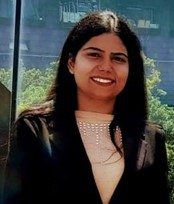
Assoc. Prof. Jyoti Jaiswal
Department of Physics
Rajiv Gandhi University, India
Title of Invited Talk
Novel miniaturized pH sensing
technologies for advanced health and biomedical applications
Abstract of Invited
Talk
The discovery of miniaturized pH
sensing technologies represents an important frontier in modern health care and
biomedical research. These miniature sensors promise to revolutionize diagnosis,
treatment monitoring, and disease management by providing real-time,
non-invasive, and accurate measurement of pH levels in various biological
environments. From microneedle pH sensors to microfluidic pH sensors and
flexible e-skin pH sensors, the spectrum of miniaturized pH sensing technologies
offer a diverse range of devices designed for advanced health and biomedical
applications. However, the development of these miniature pH sensing
technologies is not without its challenges. Some hurdles include achieving high
sensitivity and accuracy while maintaining the miniaturized dimensions required
for seamless integration into biological systems and the design and fabrication
of miniature sensors capable of withstanding the complex and dynamic conditions
within the human body. Moreover, ensuring biocompatibility, long-term stability,
and ease of use are critical considerations that must be addressed to unlock the
full potential of these technologies in biomedical applications. In this
context, we have probed into the design and development of various miniature pH
sensing technologies, exploring the challenges encountered along the way and
invented innovative solutions to overcome them. Recently, we reported, for the
first time, a new design of miniaturized microneedle pH sensors based on AgIO3/Ag/PTFE/WO3/W,
enabling in-situ real-time pH monitoring of small biological entities, such as
fish eggs. Additionally, we recently proposed a novel microfluidic pH sensor
using Sb2O3/Sb and AgIO3/Ag thin films,
demonstrating robust Nernstian sensitivity, linear correlation coefficient,
stability over time, and in-vitro pH testing of human lung cancer (A549) cells
with minimal sample volumes. We also recently introduced a novel flexible
on-skin wearable pH sensor patch composed of PDMS, incorporating thin films of
Sb2O3/Sb and AgIO3/Ag for real-time sweat
sensing to monitor pH levels across various body parts, which is highly
desirable for sports medication and personal wellness. Overall, this talk would
present new results in the design and development of various miniature pH
sensing technologies for advanced health and biomedical applications.
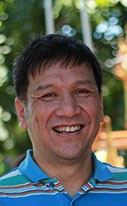
Assoc. Prof. Ratchatin Chancharoen
Mechanical Engineering Department, Robotics and AI Program
Chulalongkorn University, Thailand
Title of Invited Talk
Collaborative 3D Welding Robots with Augmented Vision Utilizing the Digital Twin Concept
Abstract of Invited Talk
This project, in collaboration with industry, focuses on enhancing the precision of collaborative 3D welding robots through the integration of digital twins and sensor fusion. A key challenge lies in managing the 3D trajectory, where errors in both position and time must be carefully addressed to ensure accurate weld joint alignment and execution. The task becomes even more complex due to the use of a heavy welding tool and the nature of the part being welded, which is not rigid or uniform, adding further variability to the process. Additionally, limitations in measurement accuracy, caused by sensor constraints and the difficulty of capturing real-time data in dynamic environments, present further obstacles. To address these issues, extensive mapping techniques are utilized to model and adjust for spatial and temporal discrepancies, while advanced image processing algorithms are applied to analyze and correct weld joint deviations. These strategies are crucial for compensating for trajectory errors and achieving the required precision despite the significant challenges inherent to the system.
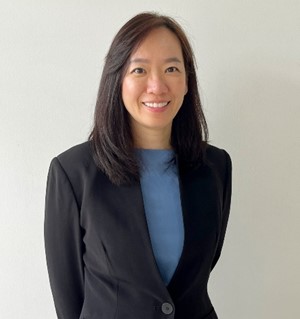
Assoc. Prof. Teeranoot Chanthasopeephan
Mechanical Engineering Department
King Mongkut's University of Technology Thonburi, Thailand
Title of Invited Talk
Hybrid PI-Neural Network Control of a Fluid-Driven Origami-Inspired Pneumatic Artificial Muscle
Abstract of Invited Talk
This research focuses on the development and design of a lower limb exoskeleton
inspired by pneumatic artificial muscles (PAMs). PAMs are highly valued as
actuators due to their low weight, favorable mass-to-force ratio, compliance,
and ability to closely mimic the function of human biological muscles. These
characteristics make them well-suited for applications in robotics and
rehabilitation. However, PAMs pose significant challenges in modeling and
control, given their time-varying parameters, complex hysteresis behavior, and
nonlinear dynamics.
To address these challenges, we propose a novel approach for controlling
PAM-driven systems, specifically focusing on a fluid-driven origami-inspired
artificial muscle (FOAM). The control strategy utilizes a hybrid control
algorithm that integrates a proportional-integral (PI) controller with a
feed-forward neural network. This combination allows the controller to adapt and
learn from the system's behavior, improving its responsiveness and accuracy over
time.
The proposed control algorithm was tested for its ability to manage displacement
control in FOAM under varying input signals. Additionally, experiments were
conducted to assess the controller's performance under different load
conditions. The results demonstrate that the control system exhibits excellent
adaptability and robustness. These findings highlight the potential of this
hybrid approach for enhancing PAM-based systems in dynamic environments, making
them highly suitable for rehabilitation and robotic applications.